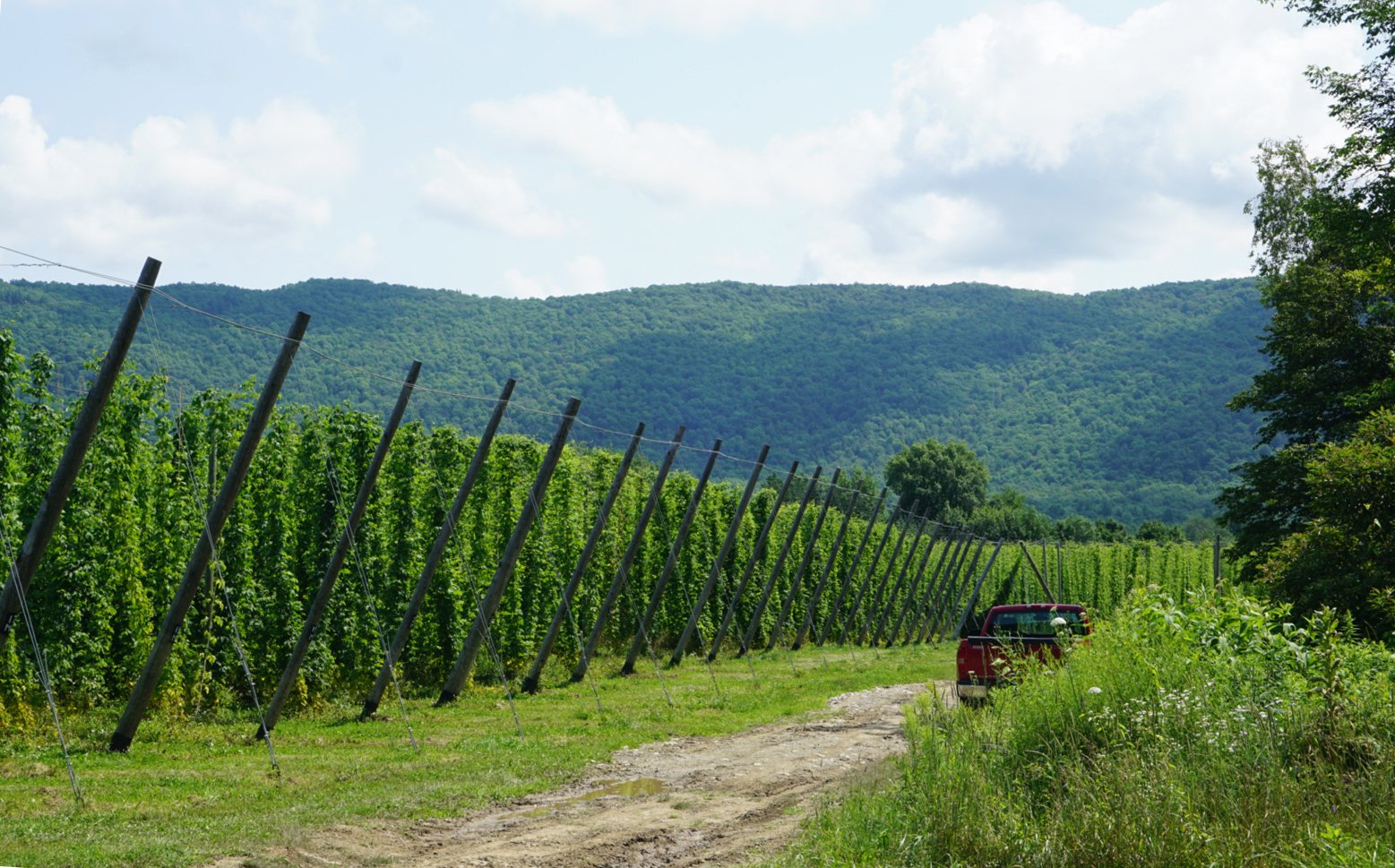Vermont’s Hop History
While hops have lain dormant in Vermont for most of the last century, this state has a rich history of hop farming. In fact, in the period leading up to prohibition, our state was the #2 hop producer in the country (after New York). Vermont hops were exported throughout the region, and our state gained a national reputation for the quality of our produce.
According to historical records, hops were first brought to Vermont by farmers from Massachusetts. The first documented cases of hop cultivation date back to 1835, and many of the regions cited in those sources remained the primary areas of cultivation all the way through to the end of the industry here.
Vermont hop production peaked in terms of the national picture in in 1850. At that time, the state was producing more than 8% of the national total, still coming second only to New York. By 1960, Vermont had reached its historical peak production, but the arrival of the Midwestern and Pacific Northwestern states to the market soon outpaced any Northeastern production. By 1900, the Vermont industry had for all practical purposes vanished.
Today, Vermont has a thriving craft brewing industry. Our breweries produce beers which win national recognition and even international attention. At the same time, the hops used to produce these exemplary products are almost entirely grown out of the state. This is true of most breweries anywhere in America, of course, since our hop industry today is concentrated primarily in the Pacific Northwest, particularly in Washington’s Yakima Valley region.
So, what changed? Vermont has always been at the perfect latitude for growing hops, and areas of the state such as ours have ideal soil for happy hop plants.
Unfortunately, our state is also extremely humid during the growing season. Those balmy summer days are great for heading to the lake, but all the moisture creates a perfect storm for hop bines, which are especially susceptible to issues with downy mildew. Throughout the 19th century, the hop harvest became less and less predictable.
Prohibition certainly didn’t help, as Vermont was one of the first states to outlaw the production of alcoholic beverages. In fact, Vermont hop production peaked just as the state outlawed alcohol.
The largest factor, though, was the emergence of hop production on the West Coast. It was actually Vermont farmers who first established hop plants in California. Daniel Flint brought the plants west in 1855, and after demonstrating that hops could be grown out West to the same degree of quality and quantity as the Northeast, the industry took off. California and the Pacific Northwest proved to be less volatile environments for hop production, and harvests soon outpaced anything Vermont had ever produced.
Vermonters have always continued to grow hops in small quantities, but Champlain Valley Hops is the first commercial-scale operation to exist in the state since the 19th century. We’re proud to continue Vermont’s legacy in the industry, and we hope craft beer lovers will be excited to learn about the forgotten but remarkable history of growing in the state.




